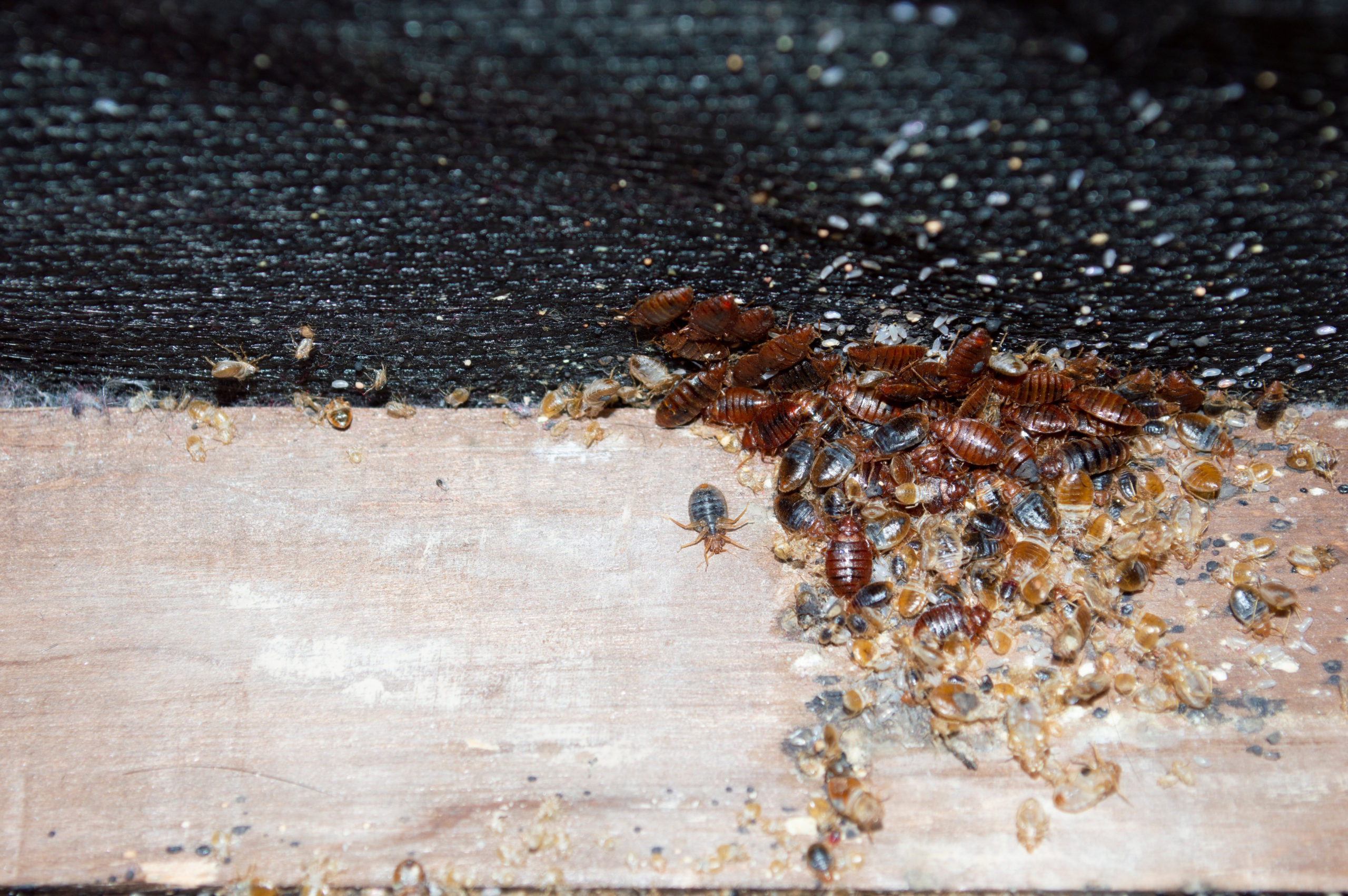5 FAQs About Bed Bugs
5 FAQs About Bed Bugs
What Do Bed Bug Bites Look Like?
Bed bugs leave behind small, itchy red spots similar to mosquito bites. The bites are often arranged in lines or clusters as bed bugs have a tendency to bite, walk a few tiny steps, and bite again, hence the pattern. Bed bugs also tend to target exposed skin, so, if you are wearing pajamas at night, they are far more likely to bite exposed areas such as your hands, feet, ankles, arms, neck, etc. 
My House is Clean… So How Did I Get Bed Bugs?
Keeping your house free of clutter, clean swept, and wiped down certainly helps to prevent a variety of pest problems. However, not all pests are drawn to these conditions, which is why you still may experience an infestation in your tidy home. In the case of bed bugs, they are targeting you… not your home and they gain access to you by hitchhiking on you and your items, leading them to infesting your living space regardless of how clean it may be. 
Do Bed Bugs Always Infest Beds?
Contrary to what their name suggests, bed bugs to not only inhabit beds. While this is often their target, as it provides them with excellent access to you as well as a variety of hiding places, it certainly isn’t the only place they lurk. Their small size and preference for dark places leads them to make their way into upholstery, bags/luggage/purses, dressers, under rugs, along the edging of carpet, inside stuffed animals, on wheelchairs, behind hanging artwork, and even in electrical outlets. 
Are Bed Bugs Dangerous?
In a way… yes. However, probably not in the way you would expect. Unlike many bloodsucking pests, bed bugs actually do not transmit diseases. The unique digestive systems of bed bugs consume and destroy most human blood borne diseases within roughly an hour of ingestion. Since bed bugs feed only once within the span of several days, it is considered virtually impossible for anything to be transmitted from person to person. However… this is not to say that they leave people unscathed. Bed bug infestations can cause a host of other health problems including insomnia, chronic anxiety, formication, and more. Along with mental effects, repeated bites have been shown to sometimes cause adverse reactions even if the victim did not have such reactions to begin with. These systemic reactions begin in localized regions prior to spreading out to affect different organs and systems within the body, and can cause lethargy, profuse sweating, chest tightness, respiratory distress, irregular heartbeats, asthma attacks, pruritis (severe itching of the skin), anaphylaxis, and, in rare cases, death. These cases where victims have been bit over months and even years develop reactions that are progressively more severe with subsequent bites, making the chance of a potentially fatal reaction significantly higher. 
How Are Bed Bugs Treated?
There are two different methods for treating bed bugs. The traditional method is through the use of chemical applications. This treatment requires a minimum of 2-3 visits to target bed bugs as they mature. This is because chemical treatments are not effective on bedbug eggs. So, while it may appear as though the problem has disappeared once the adults stop biting, it’s only a matter of time before the eggs begin to hatch and the nymphs start searching for their blood meals. Then, it’s difficult to retreat in time as the eggs will hatch at different times and continuously spraying chemicals in your home, especially in your bed, is not at all ideal. Our preferred method of choice to combat bed bugs is heat. Not only is this treatment ecofriendly, but it will kill both adult bed bugs and their eggs. The infected area is heated to at least 115°F (46°C). Once the area has reached this heightened temperature, it must be maintained for roughly 10 minutes, which is ample time for the little creepy crawlers to expire from exposure to the heat. 
Citations
Bed Bugs (2017) The Centers for Disease Control and Prevention. U.S. Department of Health and Human Services. Available at: https://www.cdc.gov/dpdx/bedbugs/index.html (Accessed: August 2020). Brennan, D. MD. (2020) Bad Bugs Slideshow: Identifying Bugs and Their Bites, WebMD. Available at: https://www.webmd.com/allergies/ss/slideshow-bad-bugs (Accessed: June 2020). Gannon, M. (2017) Bedbugs: Facts, Bites and Infestation, LiveScience. Available at: https://www.livescience.com/42297-bed-bugs-facts-information.html (Accessed: August 2020). Green, H. (2016) 7 Things You Should Know About Bed Bugs, YouTube. SciShow. Available at: https://www.youtube.com/watch?v=uFk0t9DHu1Q Miller, D. M. and Polanco, A. (no date) Bed Bug Biology and Behavior, The Department of Entomology at Virginia Tech. Virginia Department of Agriculture and Consumer Services. Available at: http://www.vdacs.virginia.gov/pdf/bb-biology1.pdf (Accessed: August 2020).
Request a Free Quote Today
(We do not share your data with anybody, and only use it for its intended purpose)
